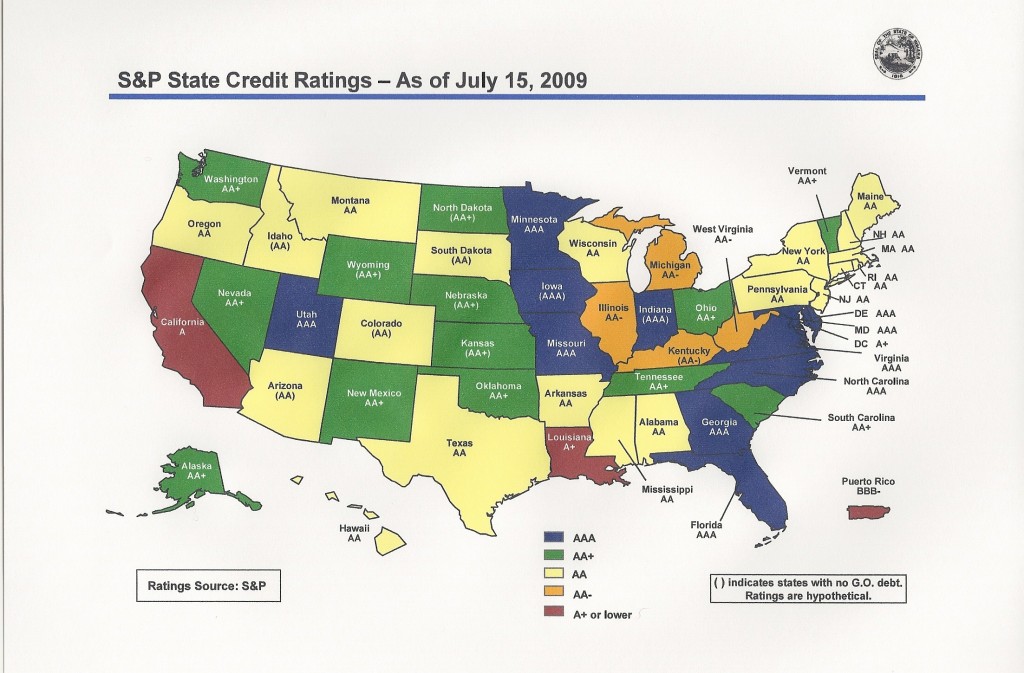As the election of November 2nd closes in, the national perspective often clouds the fact that this election is very much a plebiscite on the quality of state and local governmental management. Governors seats and the senate and assembly positions are up for grabs across the nation, and as Tip O’Neill, the old Boston pol once so famously claimed, ‘all politics is local’. In many ways the consensus on state and local governments often precedes the eventual national direction and concerns, and 2010 is shaping up to be an election about competence. Chris Christie, in winning the governorship of the very blue state of New Jersey last year on the issue of competence and adult management, changed the sense of the possible in all state elections and has states with incompetent governmental styles reeling in fear of the potential electoral wave before them. State governments are frequently under the onus of the requirement for a “balanced” state budget, where the national government has no similar requirement. State governments who have done a poor job of supporting their local economic advantages, and have instead fed the ballooning demands of state and local employee entitlements, allowing them to devour the discretionary portion of their budgets, are in particular trouble. When the economy was sufficiently successful to support the spendthrift habits, the balance sheets seemed to work out, but with the recession lingering, states have had to progressively pilfer from other state fund vehicles to make up the difference. My home state of Wisconsin under democrat governor Jim Doyle has been one of the great thieves, and has seen progressive loss of support in the bond market for its follies. Wisconsin, an upper Midwestern state long known for effective government, outstanding education, and a diverse economy of both agriculture and manufacturing, has become a progressive loser compared to its better run neighbors in Indiana, Iowa, and Minnesota. The election in Wisconsin for Governor this year, pitting republican Scott Walker against democrat Tom Barrett, is a particularly sharp contrast in philosophies of restoration of investment in economic sanity and local industriousness versus the stand-pat support of the safety net against all other needs. The pattern of local and state competence and economic success is reflected in Standard and Poor’s state bond ratings, which reflect the lender’s confidence in whether their bond support will be realized by return on the borrowed money. The map not surprisingly gives a pretty clear indication of the state’s most “in trouble” for a coming electoral sea change.

How does your state compare to your neighbors when put under the microscope of appropriate management of all your states assets and resources? The web site 24/7 Wall Street has a terrific breakdown of where the fifty states rate in regard to the concept of “well run”, including not only the traditional standard of fiscal information, but also, GDP per capita, debt per capita, credit rating, household income, percent of residents below the poverty line, support of education, support of infrastructure, and health care coverage – all impacting the state’s capacity to meet current needs and successfully invest in its future. Take a look at the survey and see where your state rates. Wisconsin has always seen itself as an example for the nation, but its rating and its credit status are average at best, thanks to a decade of lack of discipline and focused attention to developing weaknesses. And if you live in California, not so the long ago, the pinnacle of state innovation, economic growth, and educational growth – read’em and weep. On November 2nd, if you don’t finally step up to the plate and vote to start to right your ship, God help you.
California should be black and blue. Illinois is not far behind. Where’s Jesse the body when we need him!